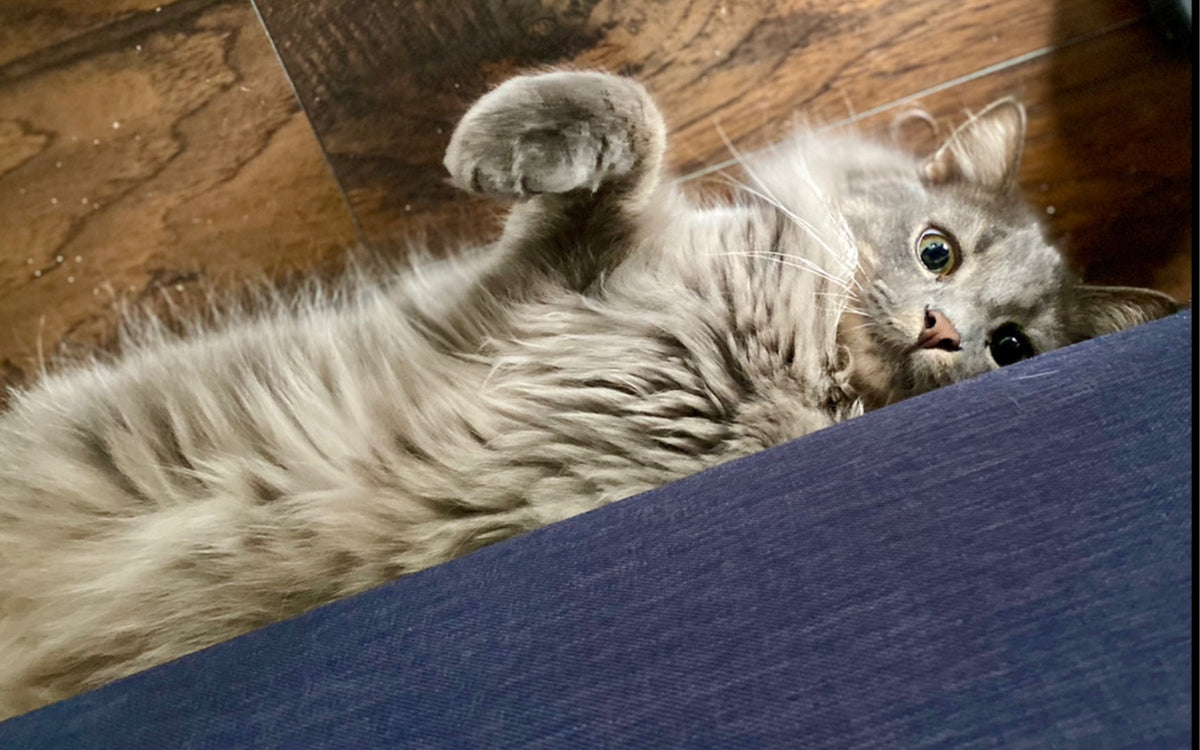
How to Stop Your Cat from Scratching Furniture
|
|
Time to read 5 min
|
|
Time to read 5 min
Owning a cat can bring immense joy, but let’s face it—sharing your space with a feline often means saying goodbye to pristine furniture. If you're wondering whether having a cat means resigning to a "post-apocalyptic" home decor style, fear not! There are practical solutions to keep your furniture safe while accommodating your cat’s natural instincts.
To understand how to stop your cat from scratching your favorite couch or curtains, it’s important to know why they do it. Scratching isn’t just a random act—it serves several essential purposes:
It’s not realistic—or healthy—to try to stop your cat from scratching altogether. Instead, the goal is to redirect this behavior to more appropriate objects while protecting your furniture.
Learn More: "Is your cat destroying your furniture? Here's why they do it—and how to stop 'aggressive' scratching behavior: experts"
The first step is to offer your cat attractive alternatives to your furniture. Cats tend to scratch what feels good and suits their preferences. Here’s how to choose the right scratching posts or boards:
Cats often scratch tall furniture like the back of a sofa to stretch their entire body. Choose a scratching post that is tall enough for your cat to extend fully—approximately the length of their body plus outstretched legs.
If a scratching post wobbles or tips over, your cat may feel unsafe and avoid using it. Opt for a sturdy base that can handle vigorous scratching without moving.
Research shows that cats prefer materials like corrugated cardboard and sisal fabric for scratching. While sisal rope is common, its texture may interfere with smooth scratching. Offering a variety of materials lets your cat choose their favorite.
Some cats prefer scratching horizontally (like on carpets), while others favor vertical surfaces. To cater to both preferences, provide a mix of upright scratching posts and flat scratching pads.
Position scratching alternatives in strategic spots:
The placement of scratching posts and pads is just as important as the type you choose. To maximize their appeal:
While providing alternatives is essential, you’ll also want to make your furniture less attractive for scratching:
Cats tend to favor rough-textured fabrics like chenille that allow their claws to sink in and pull fibers loose. Consider furniture with smooth or tightly woven materials like:
If you’ve already invested in furniture, use slipcovers or protective films made from durable materials. These make scratching less satisfying and protect your furniture.
Certain scents like citrus, vinegar, or menthol are unappealing to cats. Spray a homemade or pet-safe deterrent on your furniture to discourage scratching.
Training a cat takes time, but with patience, you can encourage them to choose scratching posts over furniture.
When your cat uses the scratching post, reward them immediately with treats, praise, or a gentle pet. Positive reinforcement strengthens the habit.
If your cat ignores the scratching post, reassess its placement, stability, or material. Sometimes small changes can make a big difference.
Furniture isn’t the only thing at risk—cats also scratch carpets, curtains, and even doors. Here’s how to handle these challenges:
Already dealing with scratched furniture? Try these tips to minimize the damage:
Cats will always scratch—it’s instinctive and necessary for their health. But with the right approach, you can preserve your furniture while meeting your cat’s needs. Provide engaging alternatives like sturdy, appropriately placed scratching posts, and make your furniture less appealing to scratch. With a little effort, your home can remain stylish, even with a feline roommate!











